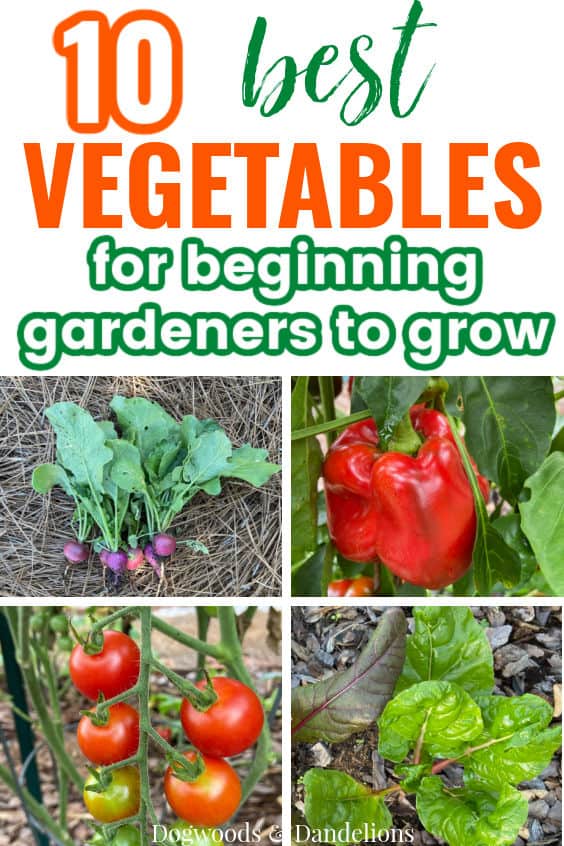Best Vegetables for Beginning Gardeners to Grow
With so many vegetables seeds on the market today, it can be hard to decide what to grow, especially if you are a beginner. And while you may want to grow all. the. things, it is best if you pick just a few vegetables to start with the first year or two.
Growing too much can lead to overwhelm and burnout really quickly. Instead, grow a few of these vegetables that are easy for beginning gardeners to grow.
Affiliate Disclosure: Please note that some of the links in this article may be affiliate links and I may receive a small commission if you purchase something through a link. It will not change your cost. As an Amazon Associate, I earn from qualifying purchases. For more information, see my disclosures page.)
Lettuce
Lettuce will always be my first choice vegetable for beginning gardeners to grow. It is an easy vegetable whether you purchase transplants or start it from seed. You get a lot of bang for your buck when purchasing lettuce seeds as the packets usually contain enough seeds for several years.
Growing leaf lettuce also means you can cut the lettuce and it will regrow. So you can harvest lettuce over a longer period of time. You can learn all about growing lettuce here.
Lettuce grows best in the cool weather of spring and fall, but can sometimes be grown during the summer with some shade. For a list of heat-tolerant lettuce varieties and tips to grow lettuce over a longer period of time, read this post.
Recommended Varieties of Leaf Lettuce
I love leaf lettuce so much. It is my very favorite vegetable to grow so it was hard for me to narrow down the varieties. However, I did manage to narrow it down to this list.
- Black Seeded Simpson – A popular variety that resists bolting in the summer.
- Green or Red Salad Bowl – These 2 varieties mature quickly and have a mellow flavor.
- Jericho – A Romaine type lettuce that was bred to tolerate heat better than some other varieties.
Swiss Chard
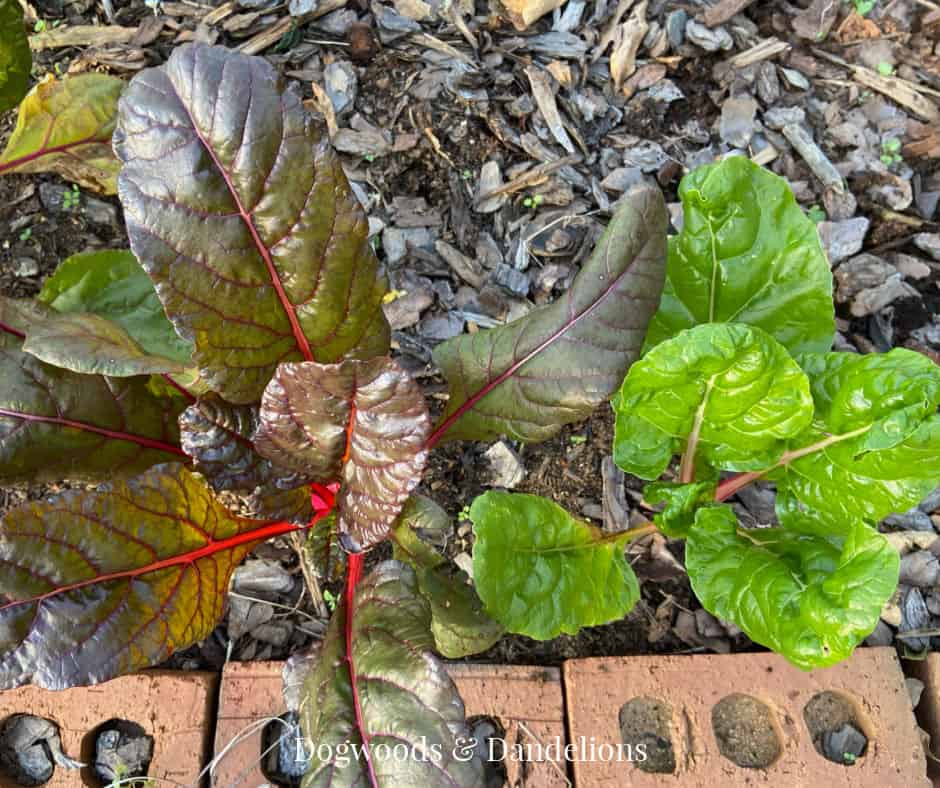
Swiss chard is another super easy vegetable to grow. In many locations it can be grown all year long. Not only is Swiss chard tasty, it is beautiful to grow too, especially if you get some of the more colorful varieties listed below.
This would be an easy vegetable to tuck into your landscape or flower containers. Your neighbors would have no idea you were growing food right under their noses!
Recommend Varieties of Swiss Chard
- Bright Lights Swiss chard – The stems on this variety come in lots of colors ranging from red to yellow to white. The leaves can be either green or burgundy red.
- Neon Swiss chard – This an even brighter variety with neon colors of red, pink, yellow and orange.
Green Beans
Green Beans are another favorite vegetable to grow as you won’t find anything quite so tasty as green beans you grew in your own backyard. There are bush varieties and pole varieties so there is something for everyone.
Green beans can be grown in pots like most of the other vegetables on this list. But before you plant, you do need to decide whether you want to grow pole beans or bush beans.
If you aren’t sure which you should grow, I recommend bush beans to start. You don’t need to plant quite as many to get enough to eat, as they are very prolific.
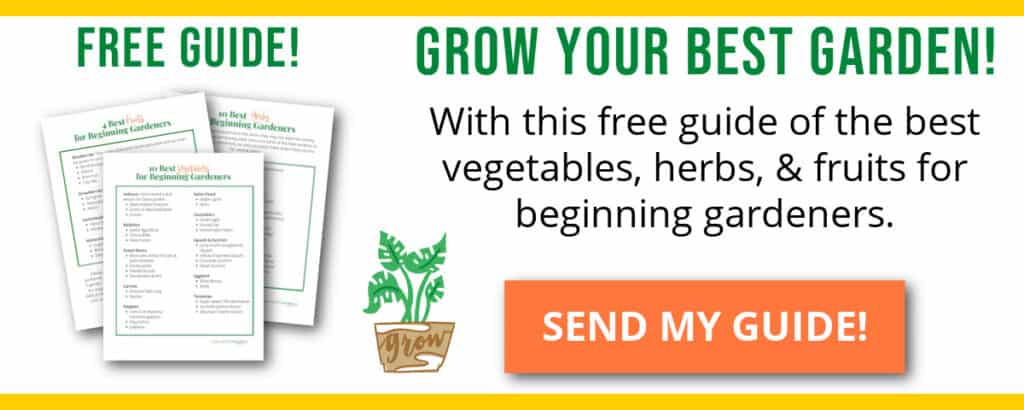
However, bush beans don’t usually produce all summer long. They will have a big flush of beans at the beginning and then often another one a couple weeks later. They will still produce beans in between, just not as many.
And most varieties only produce heavily for about 6 weeks. Of course, if you have the space you can always plant more later.
Pole beans must be grown on a trellis. You won’t get as many beans at one time but you will be able to harvest beans over a longer period. Pole beans generally produce all summer long.
Recommended Varieties of Green Beans
- Blue Lake – This variety comes in both pole and bush versions. It is an old time favorite that is very popular among backyard gardeners.
- Fortex – A slender, stringless pole bean that grows well and stays tender on the vine even if not picked immediately when ready
- Maxibel – A stringless filet bush bean that produces lots of 7 1/2″ beans on low growing plants. I’ve grown this variety for years.
- Slenderette – I just discovered this variety last year and I’m in love. This bean produced all summer long in my garden, even during the hottest of days.
If you want to learn more about growing green beans, read my post How to Grow Green Beans.
Radishes
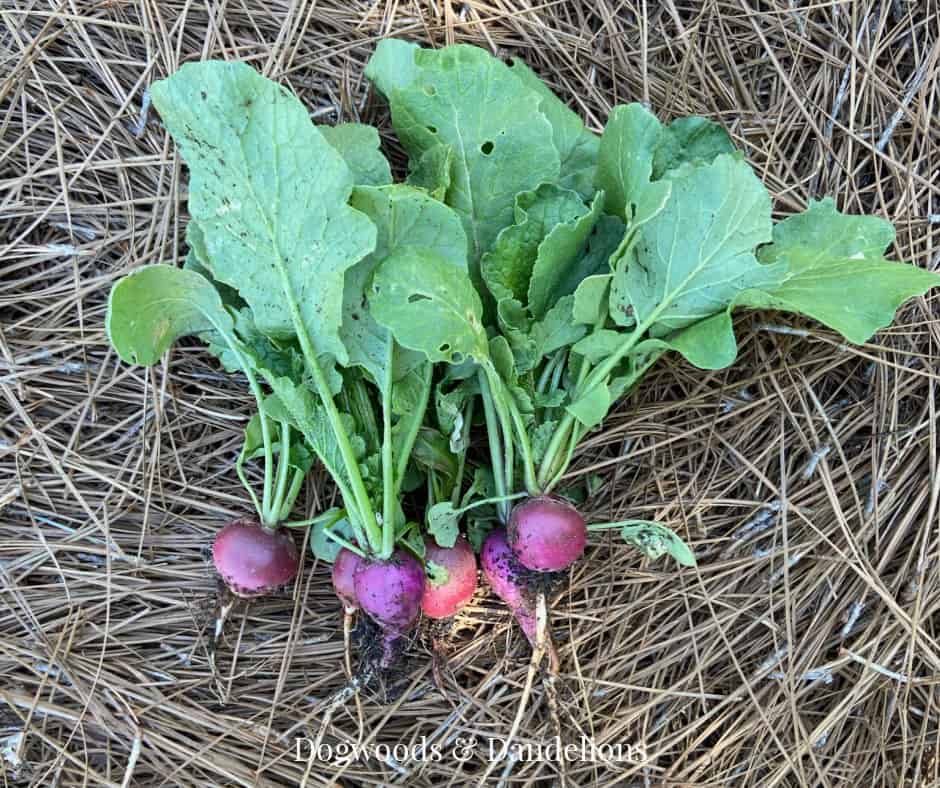
Radishes are so fun to grow. They are a quick maturing vegetable that can go from seed to harvest in about a month.
Radishes do best in the cooler weather of spring and fall. They can be grown in the summer if you provide adequate water and harvest while still small. Otherwise they can get pithy and bitter.
If you don’t care for radishes, (I used to think I didn’t.) you must try them roasted before you decide you don’t like them. Roasting takes the bite out of them and makes them taste somewhat similar to a potato.
Recommended Varieties of Radishes
- Easter Egg Blend – A mix of red, pink, white, purple, and lavender colors. This a great variety for a children’s garden.
- Cherry Belle – A very early variety that is ready to be harvested in as little as 22 days.
- Watermelon – A unique variety that has bright green shoulders and has a bright pinkish-red interior. It resembles a watermelon when sliced.
To learn more about growing and harvesting radishes, check out How to Grow Radishes.
Squash & Zucchini
I love growing squash and zucchini because it is such an easy vegetable for anyone to grow. You can plop a few squash seeds in the ground and most likely they will germinate and produce beautiful plants with lots of fruit for you to enjoy.
Squash and zucchini don’t really require much care and in less than 45 days, you can be eating these vegetables from your garden. The only downside to growing squash or zucchini is that they do take up a large amount of room in your garden.
Recently though, there have been some space-saving varieties hit the market, and I’ve tried to note those below. You can learn more about growing squash and zucchini in this article.
Recommended Varieties of Squash & Zucchini
- Early Prolific Straightneck Squash – Produces lots of squash on this old time favorite. (It was an All America Selections Award winner in 1938.)
- Yellow Crookneck Squash – Another heirloom variety, yellow crookneck often have warty looking skin. They should be picked small, at less than 5 inches, for best flavor.
- Cocozelle Zucchini – This heirloom zucchini is a bit unusual in that it has dark and light stripes. It is very flavorful and tender and no matter how many varieties of zucchini I try, I always grow this one. It is a good variety for containers too.
- Raven Zucchini – A dark green variety that grows on a compact plant making it perfect for small gardens or containers. Raven produces lots of fruit and you can usually start harvesting in about 6 weeks.
For more information on growing squash and zucchini, you can read my guide on growing squash and zucchini.
Peppers
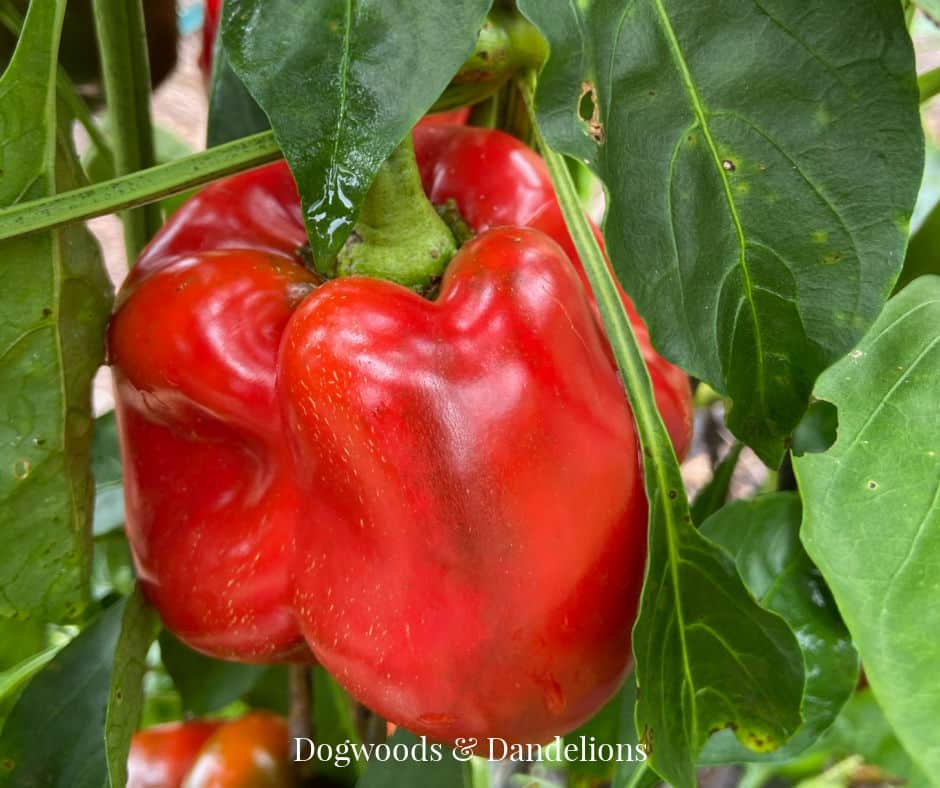
Peppers are a great vegetable for beginning gardeners to grow. They are generally disease-free and aren’t bothered by many pests. Peppers grow well in both containers and a regular garden bed.
The one downfall to peppers is they can be a bit difficult to start from seed. I highly recommend purchasing transplants when growing peppers your first few years.
Whether you enjoy bell peppers or hot peppers, I recommend trying at least one variety in your first garden. You’ll be amazed at how flavorful a pepper can be.
Recommended Varieties of Peppers
- Yum-Yum Hybrid – These are small, lunchbox size peppers that come in red, yellow, and orange. With few seeds, they make a perfect snacking pepper on a relish tray or charcuterie board.
- King Arthur Hybrid – An early variety that produces large red peppers with a sweet flavor. The plants only grow about 2 feet tall making them a great choice for small gardens.
- Hot Peppers – With so many varieties of hot peppers on the market today, it is probably best to go with what you can find locally. The number of hot pepper varieties grows each year so you can have fun trying a new one every year.
Cucumbers
Cucumbers are easy to grow in most climates. In small gardens they work really well growing up a trellis. Even in a larger garden, I recommend growing cucumbers vertically. It keeps the fruit clean and it is easier to spot pests.
A couple of cucumber seeds will yield quite a large harvest. They can be planted directly in the ground or in a container. If you don’t have a trellis, a simple tomato cage works well to grow cucumbers upright. I would just purchase one at least 60″ tall as cucumber plants can get rather long.
Recommended Varieties of Cucumbers
- Green Light Hybrid – This new variety is actually bred to be trellised. It was a 2020 AAS Award winner too.
- County Fair Cucumber – A pickling variety that also makes an excellent slicer. I grow this one every year.
- Homemade Pickles – This is the perfect variety for making refrigerator pickles. It also has excellent disease resistance to many common diseases.
Carrots
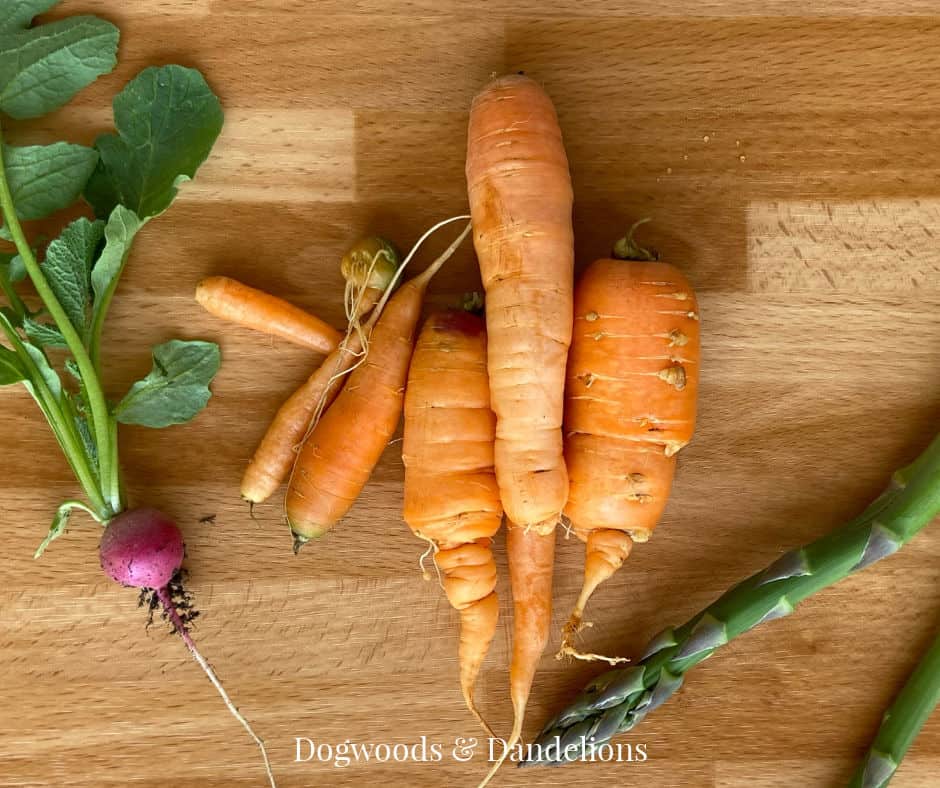
Carrots are so much fun to grow. While they take a bit longer to mature than some of the other vegetables, there is nothing like pulling a fresh carrot from the ground, rinsing off the dirt, and eating it without even having to peel it!
Carrots grow well almost anywhere and work great in containers too. However, if you have clay soil and still want to grow carrots in the ground, there are many shorter varieties that work well.
You can find seeds for round carrots, purple and yellow carrots, and many other interesting varieties. Since carrots should always be started from seed, they are a very economical vegetable to grow too.
Recommended Varieties of Carrots
- Danvers Half-Long – A blocky carrot that is great for storage. Only grows to about 7 inches long so a good variety for heavy soils
- Nantes – Another shorter carrot for clay soils that will overwinter in your garden if mulched heavily.
- It’s also fun to try some of the colored varieties. You can sometimes find packets of seed with a variety of colors in one pack. But some to try are Yellowstone, Purple Haze, Red Samurai, and Snow Man.
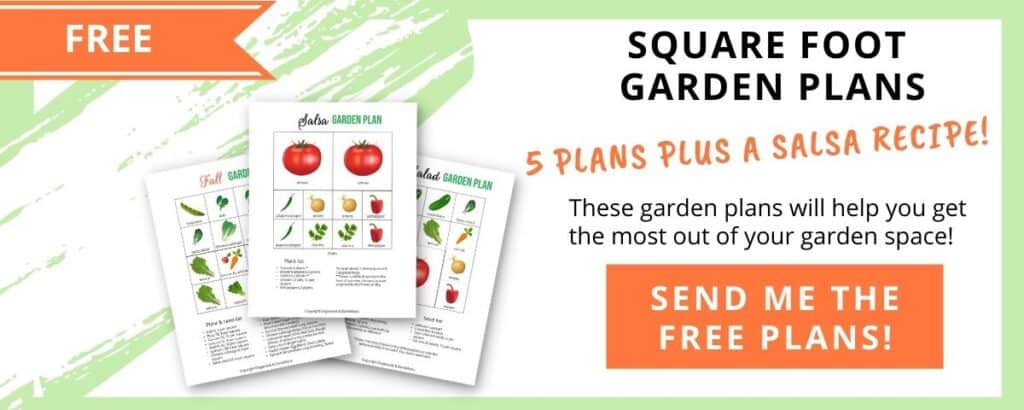
Eggplant
This vegetable may surprise you to have made the list of easiest vegetables for beginners to grow, but eggplants grow well in most gardens. They come in different shades of purple and there are even white varieties.
Picked young, they don’t have near the bitterness that some purchased eggplants contain. Eggplants grow well in both containers and an in-the-ground garden and the flowers are so pretty when the plants bloom
Recommended Varieties of Eggplant
- Black Beauty – This is the variety that looks like the eggplants you find in the grocery store. This is an old reliable heirloom variety with dark purple, almost black skin.
- Bride – This eggplant produces banana-shaped eggplant that are mostly white with lavender near the stem end. The plants are smaller, growing less than 18″ tall and make a great choice for the home gardener with limited space.
Tomatoes
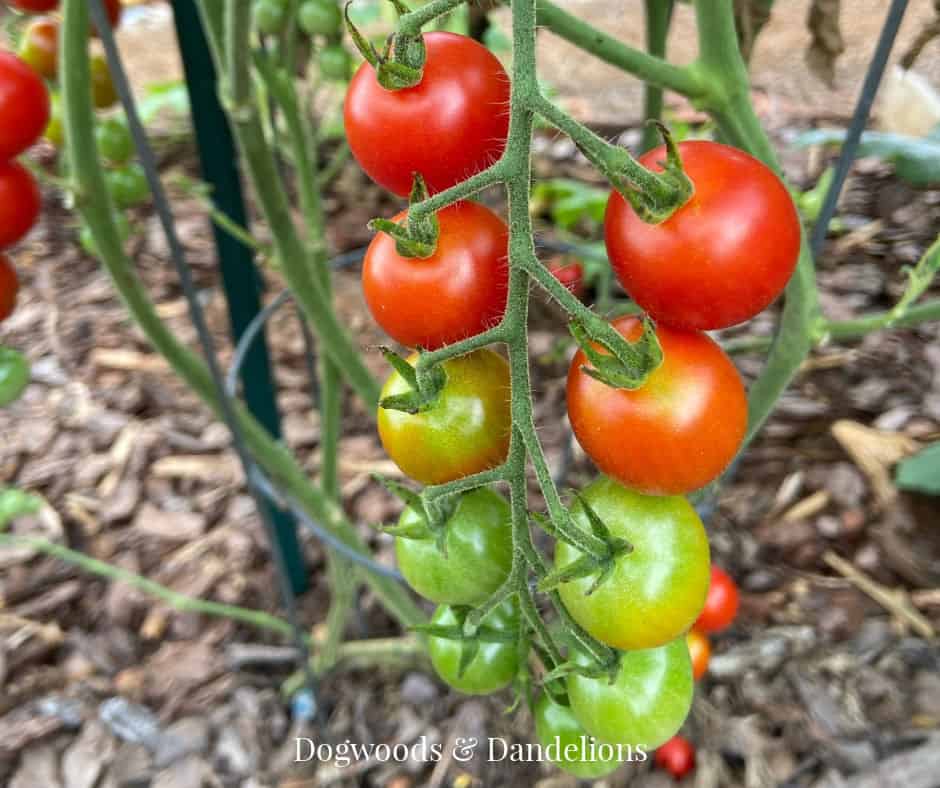
You didn’t think I would forget to include tomatoes did you? Tomatoes, especially cherry tomatoes, are a very easy vegetable for beginning gardeners to grow.
The plants aren’t plagued with as many diseases as regular beefsteak and heirloom tomatoes and they also aren’t as prone to blossom end rot.
And the variety of cherry tomatoes is outstanding. You can of course grow red cherry tomatoes, but there are yellow, orange, green, and even purple varieties.
If you prefer larger slicing tomatoes, I do recommend growing a hybrid variety the first few years. Many hybrids have been bred to have some disease resistance and they will likely yield more per plant than heirloom types.
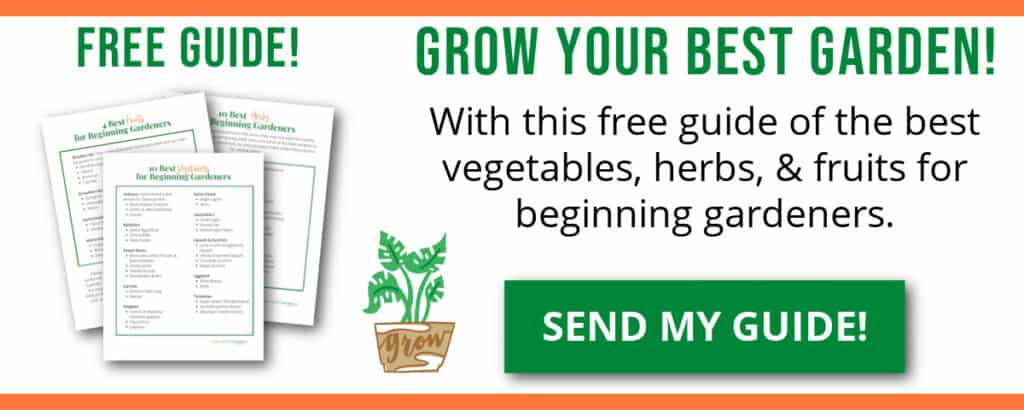
Recommended Varieties of Tomatoes for Beginning Gardeners
With so many varieties of tomatoes, it can be difficult to choose what to plant in your garden. If you haven’t been gardening long, I recommend purchasing plants from your local hardware store or garden center.
Purchasing locally will ensure you get a variety that does well in your area. The only problem with purchasing plants is that you are limited in what kinds you can grow. These are my favorite varieties for my area (North Carolina – Zone 7b). However, what you buy locally should do well in your area.
- Super Sweet 100 – a red cherry tomato that is easy to grow and has a great flavor.
- Sun Gold – My favorite tomato every. This yellow cherry is so sweet.
- Arkansas Traveler – A great slicer tomato, especially for the hot and humid southeast.
Read What Kinds of Tomatoes Should I Grow for more information on choosing the best type of tomato for your backyard garden.
Best Herb for New Gardeners
The herb I recommend most for beginning gardeners is basil. It is super easy to grow and you can find basil plants almost anywhere. Plus it tastes great with those cherry tomatoes you may be growing.
Basil will not tolerate any amount of frost so be sure to plant it a week or two after your last expected spring frost. It will also need to be harvested in the fall before your first frost then too.
Basil plants are very prolific and unless you make a ton of pesto, one plant is likely all you need. Basil grows best with regular harvests as that keeps it from going to seed.
Best Fruit for Beginning Gardeners to Grow

If you want to try growing fruit, I recommend trying blueberries. Blueberries grow well in containers but they also make a beautiful landscape plant you can add to your flower beds.
Blueberries have beautiful pink flowers in the spring, bluish-purple fruit in the summer, and gorgeous red leaves in the fall making them a wonderful addition to your yard.
Read more about growing blueberries here.
My Best Advice for Beginning Gardeners
Now that I’ve shared the best vegetables for beginning gardeners, let me share some advice for those of you who are new to growing a vegetable garden.
My best advice for beginning gardeners is to start SMALL. Don’t try to grow all 10 of these vegetables your first year. Pick 2 or 3 and start a square foot garden or grow a few containers on your deck.
One other piece of advice I recommend for beginning gardeners: Grow what you like to eat. If you hate salads, don’t grow lettuce. It’s a waste of time and space in your garden.
If you can’t stand tomatoes, don’t grow them just because everyone else grows them. Save that space for growing something you do enjoy.
Plus, you won’t enjoy the experience if you aren’t growing something you enjoy eating. After all, eating your homegrown produce is the best part!
Related Posts
- How to Understand a Seed Packet
- Don’t Make These Beginning Gardening Mistakes!
- Know Which Vegetables to Start from Seed & Which to Buy as Transplants
